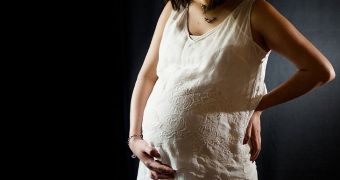A group of investigators with the Autism Center of Excellence at the University of California in San Diego (UCSD) argues in a new study that autism begins developing in the human brain during the second trimester of pregnancy, although symptoms only become apparent much later on, when the newborns become toddlers.
This discovery could go a long way towards revealing some of the root causes associated with autism spectrum disorders (ASD), potentially opening up new ways to treat these conditions. These results are based on analyses of brain tissues harvested from autistic children who died early on in their lives.
ACR scientists led by investigator Eric Courchesne were able to identify patches of disorganization in the cortex. These patterns were not present in similar brain tissue samples collected for healthy children. According to the team, the changes occurred predominately in areas of the brain responsible for underlying learning and memory formation.
In a paper published in the latest issue of the prestigious New England Journal of Medicine, scientists say that cortical organization begins in the second trimester of pregnancy. This implies that ASD also begins developing around the same time, much earlier than experts had previously estimated.
“So something must have gone wrong at or before that time,” comments Courchesne, who was the author of the new NEJM paper. These conclusions appear to support hypothesis claiming that genes in charge of controlling brain development may play a very important role in the development of autism, NPR reports.
By starting therapy earlier on in childhood, doctors may soon be able to coerce the brain into rewiring its neural pathways so that affected areas are simply bypassed. The Courchesne likens the cortex to a 6-layered cake. “There are six layers, one on top of the other, and in each layer there are different types of brain cells,” he explains.
In ASD children, these layers suffer significant changes, wherein “there are patches in which specific cells in specific layers seem to be missing,” the lead research explains. This leads to blurred layer boundaries, which in turn causes the cortex to function as a disorganized collection of nerve cells.
Studies of this type are very difficult to conduct due to a lack of relevant brain samples. Parents rarely agree to donate brain tissues from their dead children to science, and understandably so. Yet, the US National Institutes of Health and Autism Speaks are trying to change this by informing parents about the benefits that their gesture might have.

 14 DAY TRIAL //
14 DAY TRIAL //